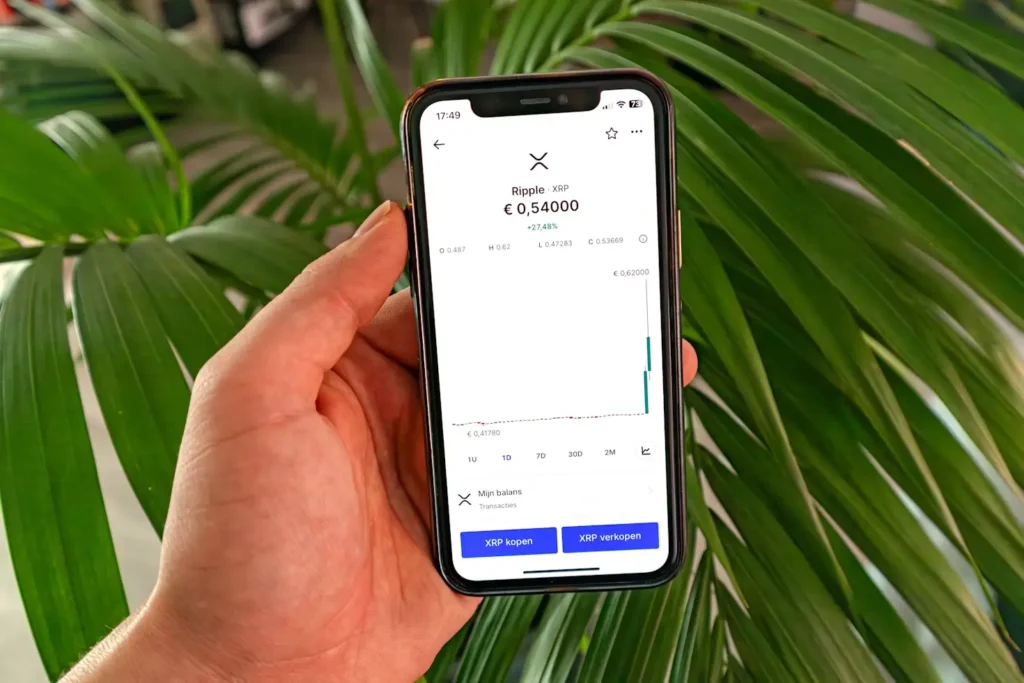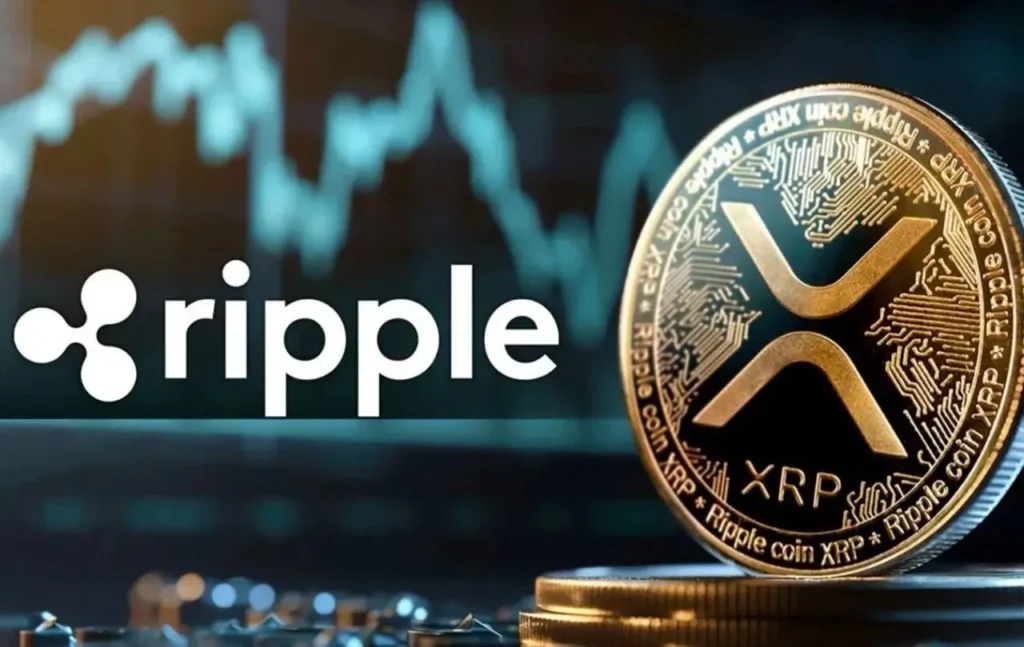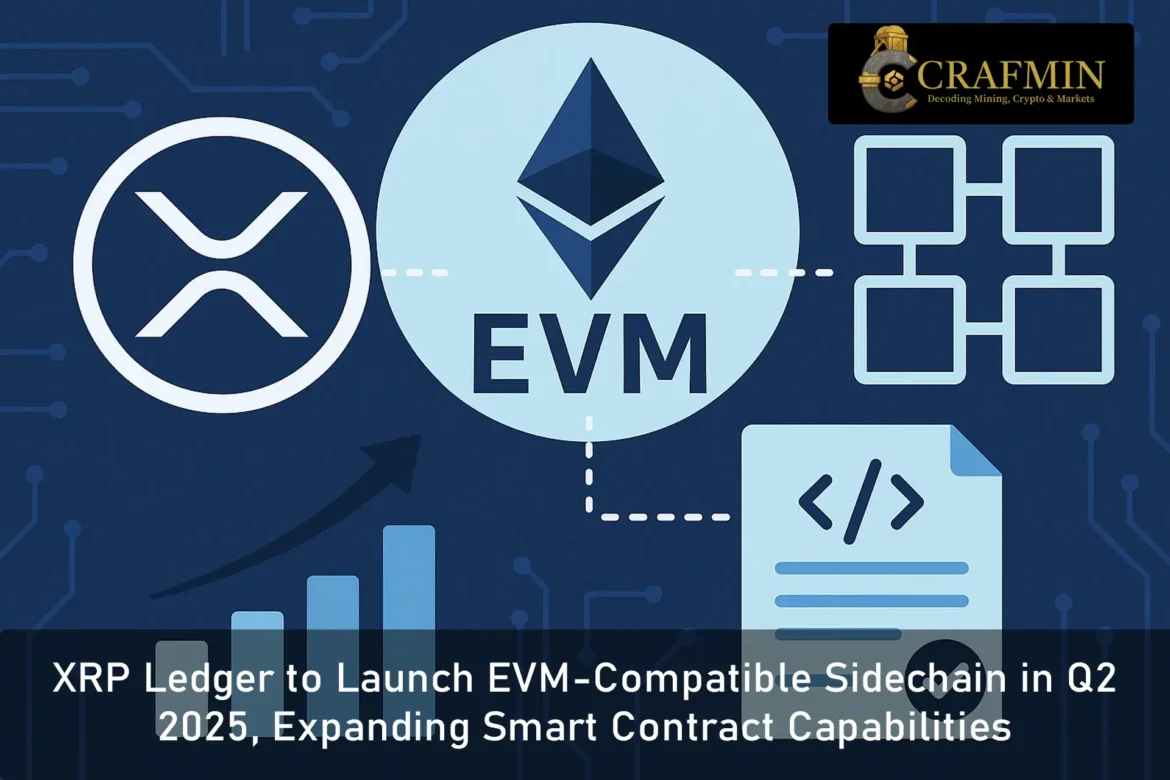XRP Ledger Set to Introduce Ethereum-Compatible Sidechain by Mid-2025
The Ledger is gearing up to release a new Ethereum-compatible sidechain during the second quarter of 2025. The development, led jointly by Ripple and Peersyst Technology, marks a significant expansion of the ledger’s existing functionality, offering smart contract features for the first time through full Ethereum Virtual Machine (EVM) integration.
Ripple’s Chief Technology Officer, David Schwartz, confirmed the expected release window during the Apex 2025 conference in Singapore. The move is set to enhance the ecosystem by enabling decentralised application (dApp) development, a capability that has traditionally been outside the scope of the XRP Ledger’s core design.

Image 1: Ripple’s XRP chat (Source: Unsplash)
Bringing Ethereum Tools to the XRP Ecosystem
The upcoming sidechain is designed to accommodate tools and languages commonly used by Ethereum developers, including Solidity, MetaMask, and Truffle. With EVM compatibility, builders can launch decentralised applications using their existing knowledge base while benefiting from the speed and low transaction costs for which XRPL is known.
To maintain performance and reliability, the sidechain operates under a Proof-of-Authority (PoA) consensus model. This approach, while more centralised than traditional systems, was selected for its efficiency. The developers aim to support more than 1,000 transactions per second, with transaction fees projected to remain under one Australian cent.
Rather than altering the base protocol of the XRP Ledger, the sidechain functions as an independent network linked to XRPL through a bridge system. This design allows the mainnet to retain its focus on high-speed, low-cost payment processing, while the sidechain handles more advanced programmability features.
All transactions on the sidechain will be powered by wrapped XRP (wXRP), a version of the native XRP token adapted for use within the EVM-compatible environment. This change introduces a new utility for the digital asset, closely tying its demand to the activity levels on the sidechain.
Secure Integration and Ecosystem Connectivity
The bridge connecting the sidechain to XRPL will be powered exclusively by the Axelar network. This infrastructure not only facilitates secure transfers of XRP and other assets but also links the XRPL ecosystem to over 69 other blockchains supported by Axelar. The inclusion of Axelar positions XRPL to take part in a broader multi-chain ecosystem, offering new interoperability opportunities for developers and users alike.
To ensure the robustness of the platform, a full code audit was conducted in February 2025 by Informal Systems, a company known for its work in blockchain security. The assessment identified and resolved one major issue related to the Cosmos SDK module. All remaining findings were considered minor and have been addressed, paving the way for a reliable production launch later in the year.
While the Ledger has offered basic smart contract support in the past, it lacked full EVM compatibility, limiting its reach in the decentralised finance (DeFi) space. With this sidechain, Ripple and Peersyst aim to remove those limitations and position XRPL as a competitive option for Ethereum developers seeking better speed and cost efficiency.

Image 2: XRP (Source: GlobeNewswire)
Strong Developer Interest and Growth Potential
Activity on the testnet, which has been running ahead of the mainnet release, shows encouraging signs of developer engagement. According to Peersyst, more than 87 developer entities not previously involved with XRPL have begun testing and building on the sidechain. Among the early projects are Strobe Finance, Vertex Protocol, and Secured Labs, which are currently trialling applications ahead of the main launch.
The initiative also supports Ripple’s broader aim to enhance the practical use of XRP. By using for transaction fees on the new network, Ripple is creating a direct link between token usage and decentralised application activity. This strategic shift could support increased utility for XRP beyond its well-established role in facilitating cross-border transactions.
The sidechain architecture ensures that these new capabilities do not interfere with XRPL’s primary functions. Instead, they operate in parallel, offering added functionality without compromising the performance or design of the core network.
The one and only @JoelKatz and Ripple’s @jazzicoop announced the XRPL EVM is going live Q2 at Apex featuring some DeFi apps like @StrobeFinance @vertex_protocol, @SecurdLabs and @squidrouter building on it pic.twitter.com/EPhz1JcdiA
— Peersyst Technology (@Peersyst) June 11, 2025
The upcoming release represents a carefully planned extension of XRPL’s ecosystem, with clear infrastructure support, developer tools, and security measures already in place. With a live testnet, early developer adoption, and a stable design, the sidechain is positioned to broaden XRPL’s appeal and functionality within the wider blockchain industry.
Read Also: Guggenheim Partners with Ripple to Launch Treasury-Backed Digital Debt on XRP Ledger
The full launch of the EVM sidechain is expected to proceed during Q2 2025, subject to final testing and validator partnerships. If successful, this integration could redefine the role of XRP in decentralised finance and establish the Ledger as a more versatile platform for blockchain development.

